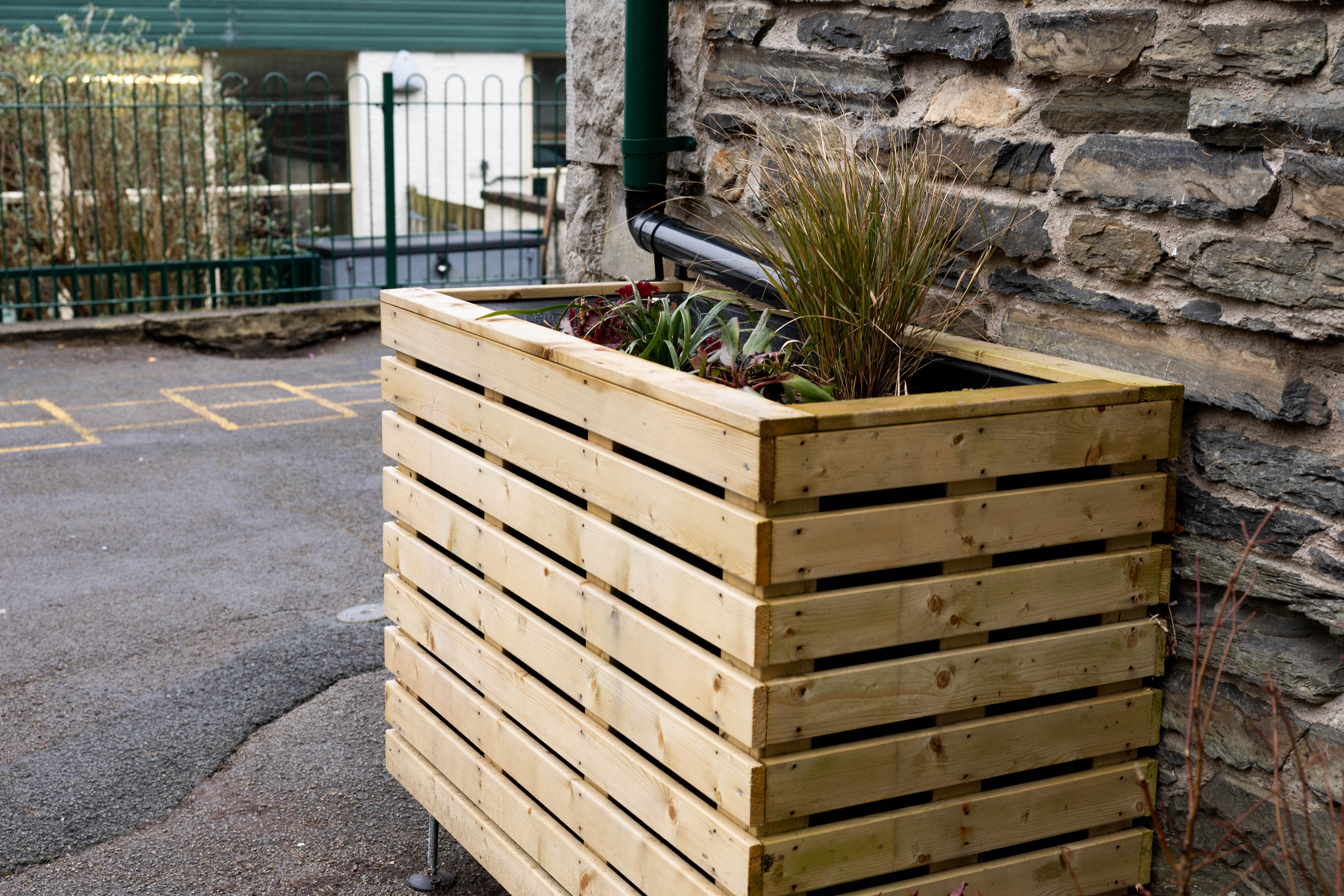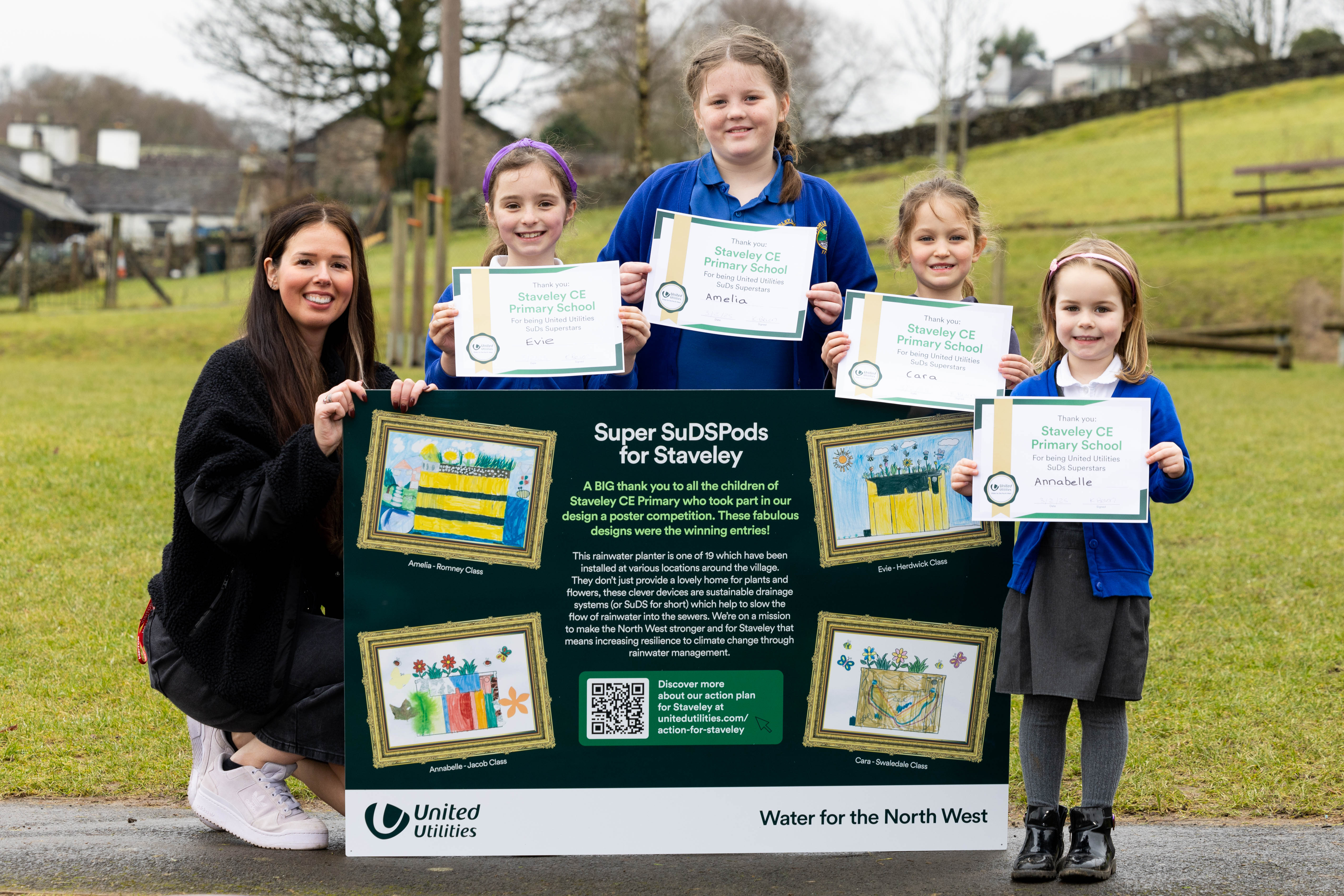Staveley SuDS pods and water butts
What was delivered
To reduce surface water issues as well as spills from the local storm overflow, two initiatives have been implemented around the village in Staveley, Cumbria. To make the initiative happen, our CEO, Louise Beardmore, met with members of the community to understand the unique issues which affect the village and ensure that they were engaged in the upcoming changes.
The sustainable drainage systems (SuDS) pods were installed around Staveley to help catch run-off from buildings whilst providing aesthetic benefit through the plants which were chosen. In tandem with the 19 SuDS pods in Staveley, 200 leaky water butts were delivered to residents for use in their own home. These water butts have the capability to automatically slow-release rainwater back into the system to allow for a more controlled flow into our networks instead of burdening them.
What was the impact
The SuDS pods provide a less stressed environment for the rainwater systems in Staveley by attenuating water at up to 5 times its own volume and help to green the local community, making it a better place for people to live.
The water butt interventions hold 200 litres of water in total, with 132 litres of rainwater stored for re-use, and 68 litre capacity for the slow release of water back into the local sewer, reducing the chance of sewer overwhelm during intense rainfall events. If we extrapolate this data, then we will be slowing the flow of approximately 13,600 litres of rainwater into the local network in Staveley village via the use of these units during each rainfall event.
The trial in this area also sees the improvement of the water treatment works in Staveley by increasing capacity which will become needed under intense weather conditions caused by climate change. This work is a monumental step in the right direction for public engagement and community collaboration which we hope to emulate across the North West in the future.

